19 Jul UV Safety Tips
Summer is here and the sun can cause many problems if you don’t take measures to protect yourself. The two biggest issues are skin and eye damage. Here are some UV safety tips to follow in order to stay safe and avoid problems while you are on the job.
Wear Sunscreen
You’ve heard it time and time again, but it’s worth repeating. Too much sun exposure is a principle cause of skin cancer and, according to the American Medical Association, around 90 percent of non-melanoma skin cancers are associated with exposure to ultraviolet (UV) radiation from the sun. UV safety is hugely dependent on protecting yourself properly.
The American Cancer Society also reports the number of new melanoma cases diagnosed in the past decade increased 53 percent. Both organizations agree – sunscreen prevents most cancers.
The American Academy of Dermatology recommends SPF30 or higher sunscreen applied 15 minutes before going outside and reapplied every two hours, or after swimming or perspiring.
No sunscreen completely blocks UV radiation and sunscreen is only water resistant, not waterproof. You need to reapply and use protective clothing, too.
Cover It
If you must work outdoors, cover as much skin as possible. Long-sleeved shirts, a hat, pants, and sunglasses are a must. Skin damage does not appear immediately, but it is cumulative and can lead to premature aging. Choose medium-weight clothing, since sunlight can penetrate lightweight fabrics.
UVB rays can damage the lens and collagen in the conjunctiva of the eye which can lead to cataracts, unsightly yellow fatty deposits in the whites of the eye, or skin cancer on the eyelids.
Look for sunglasses with a 100% UVA/UVB label. Don’t trust the color of the tint or the price tag. Expensive does not mean effective. Sunglasses that wrap around your head provide superior protection.
Know the Risks
When possible, avoid work between 10 a.m. and 3 p.m. If this isn’t possible, take frequent breaks in the shade and drink plenty of water.
If you work near reflective surfaces such as water, sand, light-colored buildings, or light-colored materials such as concrete, you’re exposed to direct and indirect sunlight. Even if the sun isn’t blazing, you’re susceptible to skin and eye damage. Up to 80 percent of UV rays can penetrate the clouds.
People with pale skin, light-colored hair, and those who’ve had skin cancer or have a family member who’s had skin cancer are more at risk. Some medications can also increase sun sensitivity.
Seek Medical Attention
If you notice changes in moles on your body, visit your doctor immediately. Common moles that change in color, size, shape, or texture or ones that itch, bleed or ooze are cause for concern. Your doctor will remove it, take a sample and send it for testing, or refer you to a dermatologist. Early detection is vital to treatment.
If your employees work outdoors, your business is still legally required to provide a safe and healthful workplace, free from hazards. Let Gilbert’s Risk Solutions help you minimize your risk and reduce the frequency and severity of claims. We’ve helped companies for over 160 years, and we’re here for you too.


No Comments